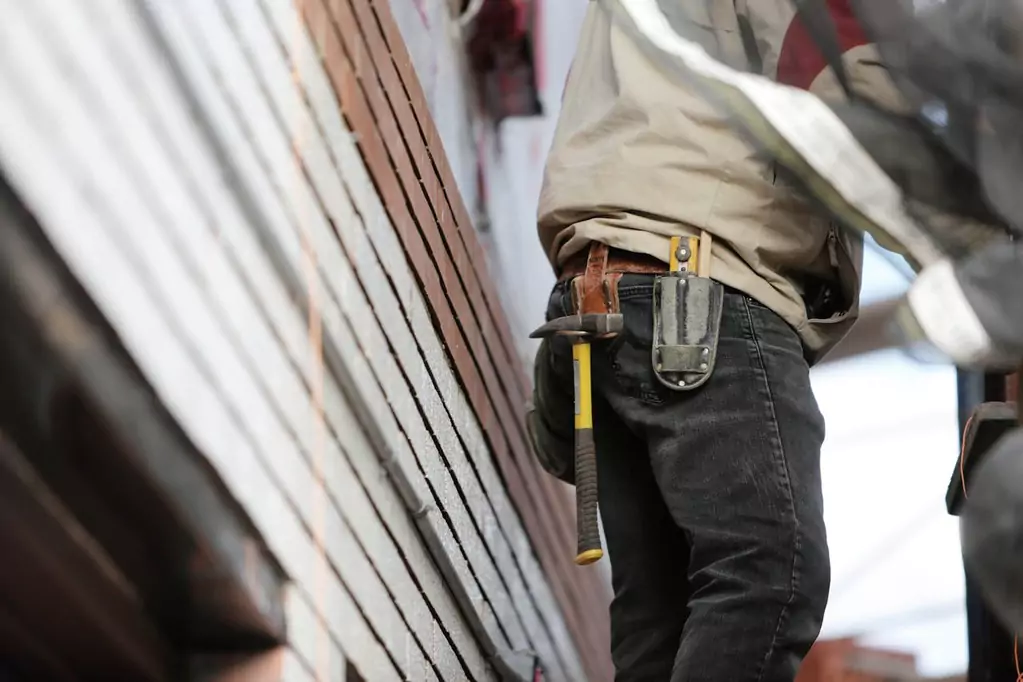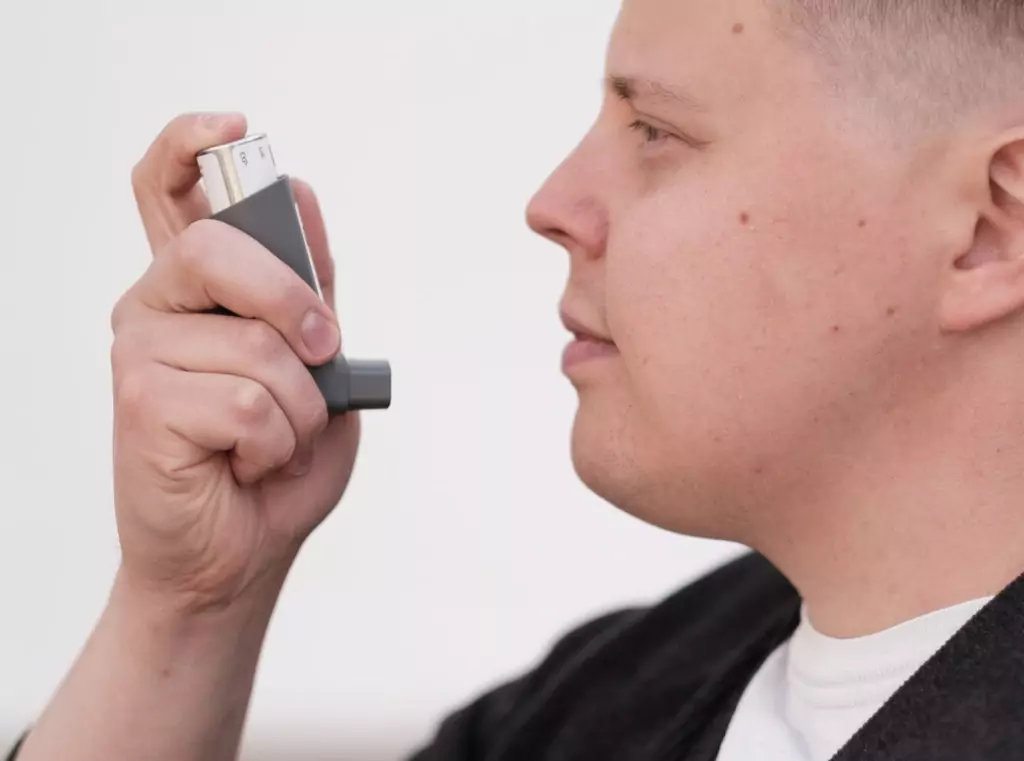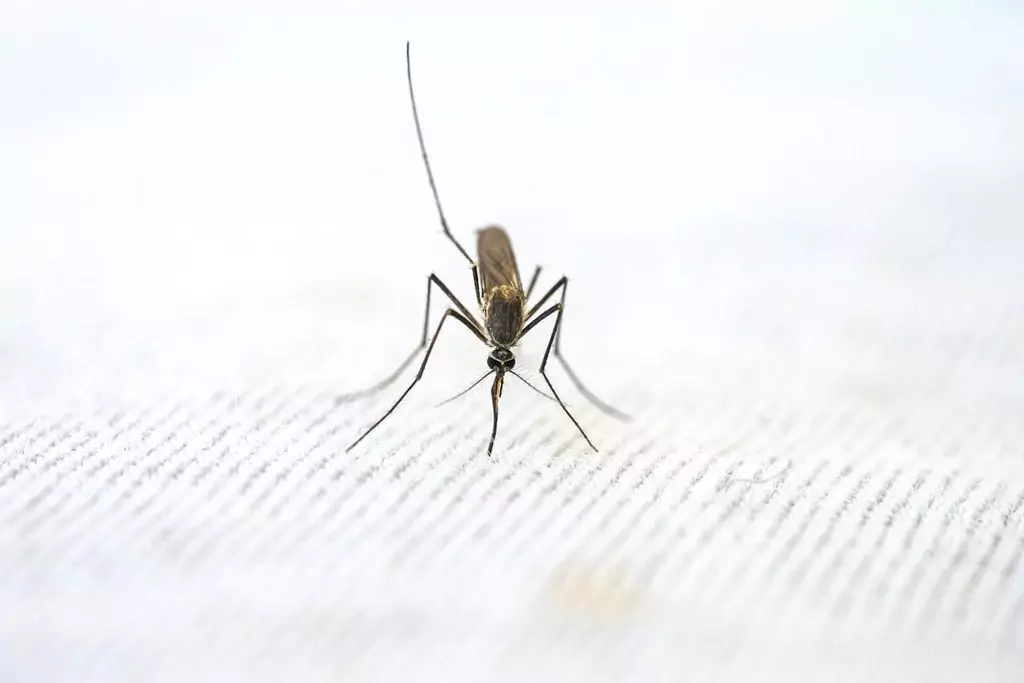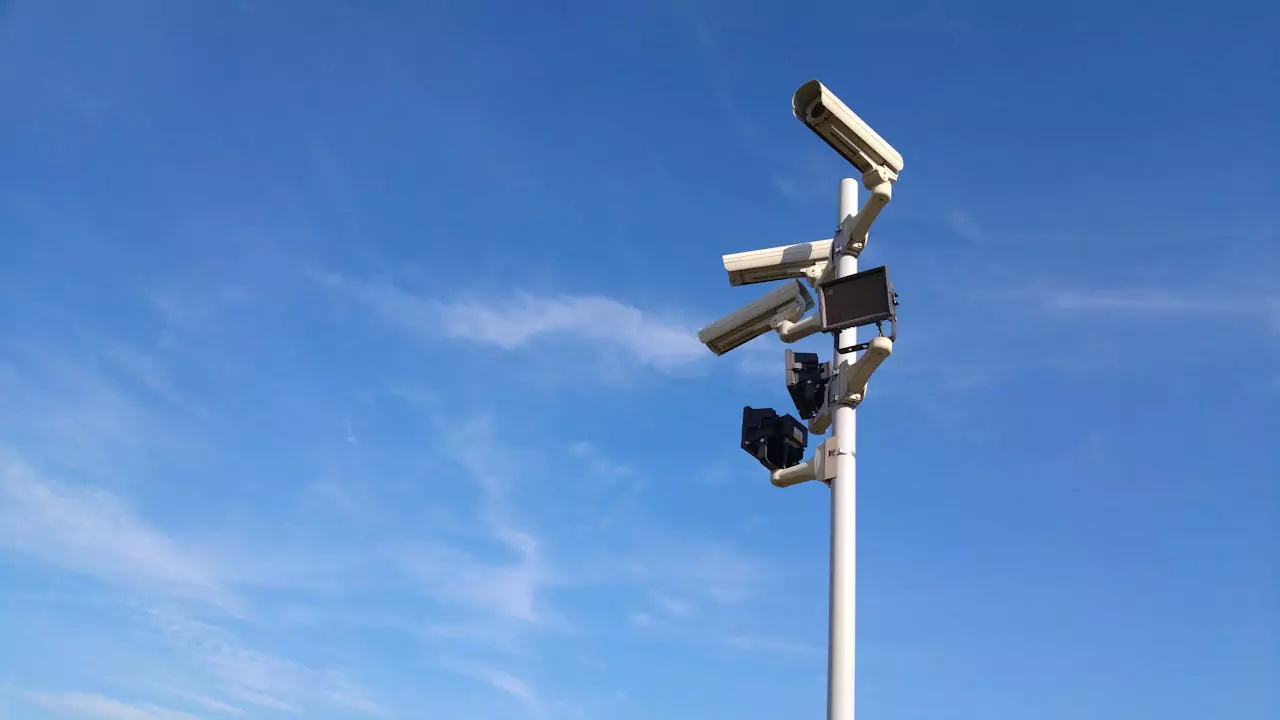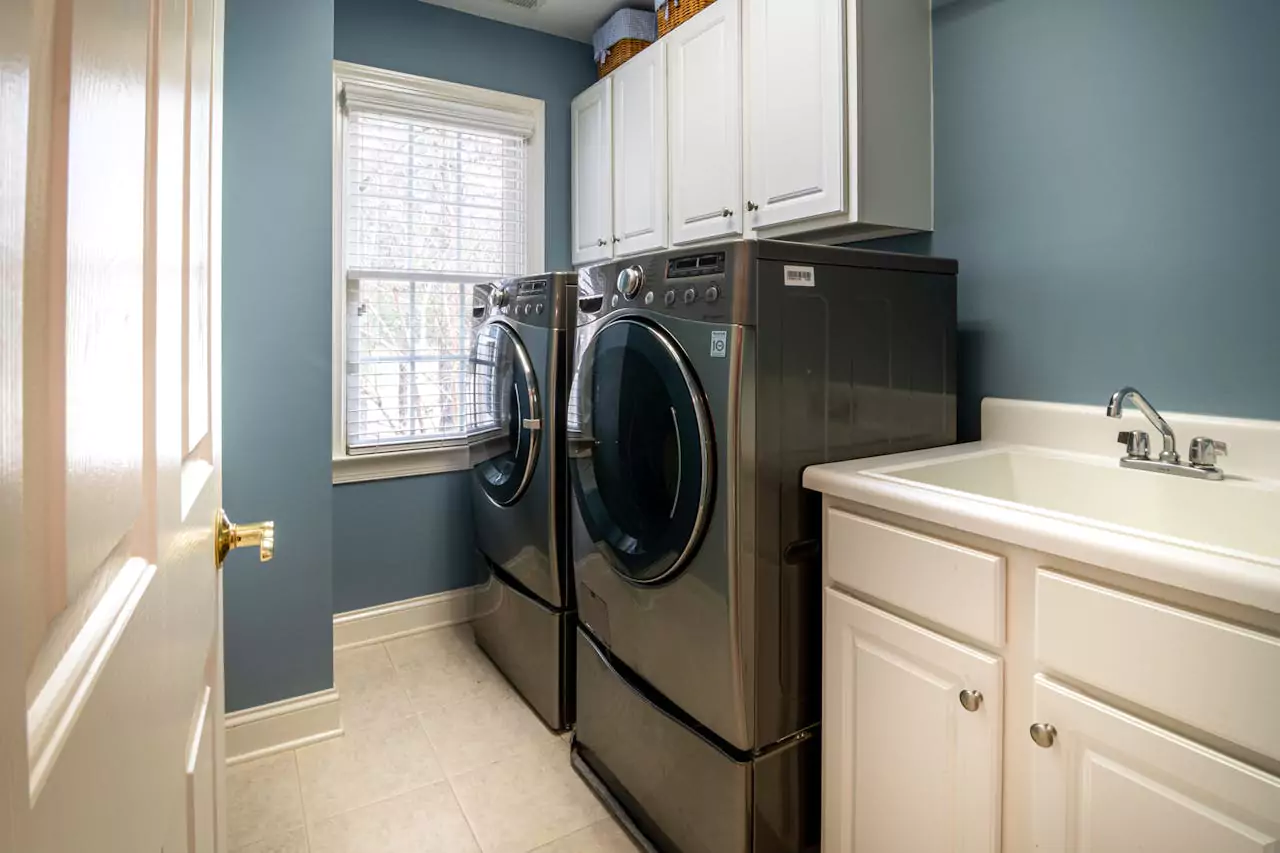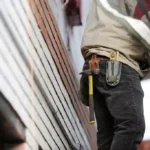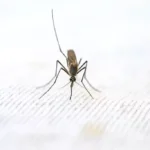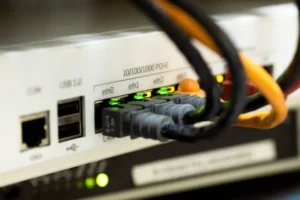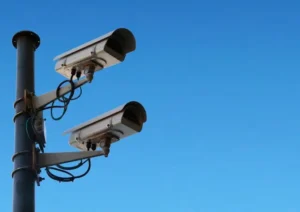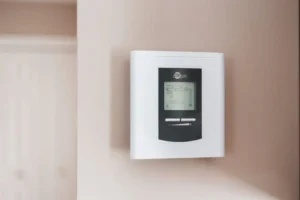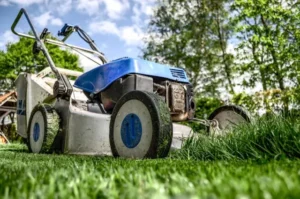Now Reading: Will Air Conditioner Help Dry Carpet at Home?
- 01
Will Air Conditioner Help Dry Carpet at Home?
- Home
- Home Appliances
- Will Air Conditioner Help Dry Carpet at Home?
Will Air Conditioner Help Dry Carpet at Home?
![]() Anne MaddisonClimate Control, Home AppliancesAugust 10, 202590 Views
Anne MaddisonClimate Control, Home AppliancesAugust 10, 202590 Views
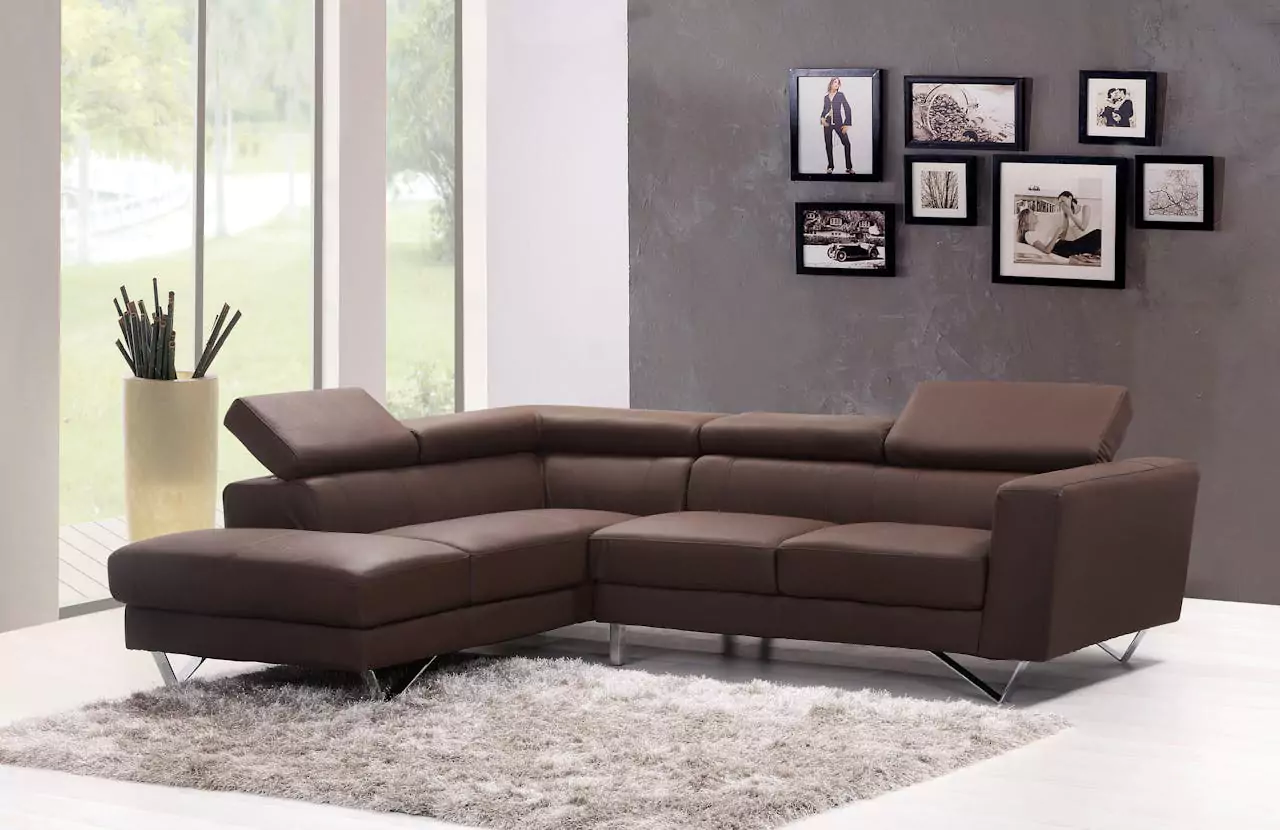
You spilled a drink. The washing machine leaked. Or maybe you just finished deep cleaning your carpets. Now you’re staring at a wet, soggy mess and wondering what to do next. Drying carpet isn’t just about making it feel dry to the touch. If you don’t get all the moisture out, you could end up with mold, bad smells, or even damage to your floors.
A lot of people ask if their air conditioner can help with this. It makes sense because ACs remove moisture from the air. But is that enough to dry a carpet? Or are you better off using fans or a dehumidifier?
In this post, I’ll walk you through what an air conditioner can and cannot do when it comes to drying carpet. We’ll look at how AC systems work, when they can help, and what other tools might speed things up. I’ll also share some tips on how to avoid mold and protect your floors from long-term damage.
If you’ve never dealt with a wet carpet before, don’t worry. I’ll explain everything in simple terms, step by step.
Can Air Conditioners Really Dry a Carpet?
Air conditioners do more than just cool a room. They also remove moisture from the air. That’s why many people wonder if they can help dry wet carpet. The short answer is yes, but it depends on a few important factors like humidity levels, airflow, and how wet the carpet is. Let’s break it down.
How AC Works (Basic Explanation)
An air conditioner’s main job is to cool the air inside your home. It does this by pulling in warm air, passing it over cold coils, and blowing the cooled air back into the room. While this process is happening, the AC also removes some moisture from the air. That moisture collects on the coils and drains away through a small pipe.
So yes, AC units do help control humidity. But they are not made specifically for drying things like carpets. The amount of moisture they remove depends on the temperature, the size of the room, and how humid the air is.
Cooling vs Dehumidifying Effects
The cooling effect of an air conditioner can help make the room feel more comfortable, but that doesn’t mean it will dry the carpet quickly. What really matters is how much moisture is being pulled from the air. That’s where the dehumidifying effect comes in.
If your room is already cool and humid, your AC might not run often enough to pull out much water from the air. On the other hand, in hot and humid weather, it may work harder and remove more moisture. Some AC units have a “dry mode” that focuses more on pulling out humidity than cooling. If your unit has that feature, it can be helpful in this situation.
Still, even with dry mode, an air conditioner is not as strong as a dedicated dehumidifier. You may notice some improvement, but it might take a long time, especially if the carpet is soaked.
Check out our guide on which air conditioner mode saves the most electricity to find out which setting is best for energy efficiency.
Why Airflow and Humidity Matter When Drying
Carpet drying depends on two key things: airflow and humidity. Airflow helps carry the moisture away from the carpet, while low humidity allows that moisture to evaporate more quickly.
An air conditioner can lower the humidity in the room, which helps. But if there isn’t enough airflow directly over the carpet, the drying process will still be slow. That’s why using a fan along with your AC can make a big difference. The fan helps move air across the wet surface, while the AC pulls moisture from the room.
Think of it this way. The more air you can move around the room and across the carpet, the faster the water will leave the carpet and enter the air. And once it’s in the air, your AC or dehumidifier can get rid of it.
When to Use an Air Conditioner to Dry Carpet
An air conditioner can help dry a carpet, but it works better in some situations than others. It’s not always the fastest method, but in the right conditions, it can be part of an effective drying setup. Let’s look at when using your AC makes the most sense and how to tell if it’s actually helping.
Best Conditions for Using AC (Humidity, Temp, Size of Room)
Your air conditioner will work best when the air in the room is warm and humid. This is because the AC has to run longer to cool the room, which also gives it more time to pull moisture from the air. If the room is already cool or dry, the unit might not run often enough to make a big difference.
Room size also matters. In a smaller room, the AC can cool and dehumidify the air more quickly. That can help reduce humidity levels faster and support drying. In a large open space, though, the AC may struggle to keep up, especially if the carpet is very wet.
Also, consider how much water is in the carpet. If it’s just damp from cleaning or a small spill, the AC might do enough on its own. But if your carpet is soaked, you’ll likely need fans or a dehumidifier to speed things up.
How Long It Might Take
Drying a carpet with only an air conditioner can take anywhere from several hours to a couple of days. It depends on how wet the carpet is, the size of the room, the power of your AC, and how much humidity is in the air.
If you’re just dealing with light moisture from a carpet cleaner or a minor spill, running the AC for a few hours might be enough. But if water has soaked deep into the carpet or padding, it could take over 24 hours even with the AC running.
Keep in mind that AC alone is rarely the fastest way to dry carpet. It helps the process but isn’t designed for it. For faster results, use fans and keep doors and windows closed to prevent humid air from coming in.
Signs It’s Working or Not Working
If the air in the room starts to feel drier and cooler, and the carpet slowly feels less damp, those are signs that your AC is helping. You might also notice less of a musty smell, which means moisture is leaving the carpet and the room.
However, if the carpet still feels wet after several hours, or if the air feels heavy and humid, the AC might not be doing enough on its own. Another sign it’s not working well is if the cooling shuts off quickly. That usually means the air is cool, but the humidity is still high. In this case, switching to “dry mode” or adding a fan or dehumidifier can help.
Also, check for any new smells or warmth in the carpet. That could mean moisture is getting trapped, which can lead to mold. If that happens, you’ll need to take stronger action to dry the carpet completely.
Better Ways to Dry Wet Carpet Faster
While an air conditioner can help, there are other methods that are usually more effective when it comes to drying carpet quickly. Some tools are made specifically for this kind of job, and using them alongside your AC can make a big difference. Let’s go over a few options that are often faster and more reliable.
Use of Fans and Air Movers
Fans are one of the most common and useful tools for drying wet carpet. They work by pushing air across the surface of the carpet, which helps moisture evaporate more quickly. The constant movement of air prevents moisture from settling and speeds up drying time.
There are also air movers, which are like heavy-duty fans made for water damage and cleaning jobs. These blow air at a low angle directly across the carpet, which can be much more effective than a standard fan.
The key is to keep the air moving as much as possible. Point the fans toward the wet areas and keep them running continuously. If the room is small, even a basic box fan can help. In larger areas, using multiple fans will work better.
Using a Dehumidifier
A dehumidifier is one of the best tools for pulling moisture out of the air. When you use one in a closed room, it lowers the humidity, which helps your carpet dry faster. It doesn’t cool the air like an AC, but it’s more focused on drying.
Dehumidifiers are especially helpful in humid environments where water in the air slows down the drying process. If your carpet is soaked or the air feels heavy, a dehumidifier can make a big difference.
For best results, use a dehumidifier alongside fans. The fans lift the moisture from the carpet into the air, and the dehumidifier pulls it out of the room.
Opening Windows (When It Helps vs When It Doesn’t)
Sometimes, opening windows can help dry carpet, but it depends on the weather outside. If the air is dry and there’s a breeze, opening windows can create natural airflow that helps with drying. The moving air helps carry moisture away from the carpet and out of the room.
But if the outside air is humid or rainy, it can make things worse. You don’t want to invite more moisture into the room. It’s best to keep windows closed in that case and rely on fans and a dehumidifier instead.
Also, if you’re using an air conditioner or dehumidifier, keeping the room sealed will help those machines work more effectively. Open windows can slow them down by letting in more moisture.
Carpet Shampooers with Suction or Wet Vacs
If your carpet is very wet, removing the water directly can save you a lot of time. Carpet cleaners with strong suction can pull water out of the carpet and padding. Some wet/dry vacuums (wet vacs) are also designed to suck up liquids and can do a good job on large spills or flooding.
These tools are especially helpful in the early stages. The more water you can remove right away, the less work your fans, AC, or dehumidifier have to do. Just make sure to follow up with airflow and drying to avoid any leftover moisture deep in the carpet.
If you’re wondering about other effects of using your AC, you might also like our post: can air conditioner make you sick?
Tips to Avoid Mold and Carpet Damage
A wet carpet is more than just an inconvenience. If it stays damp for too long, it can turn into a bigger problem. Mold can start to grow in as little as 24 to 48 hours, especially in warm or humid conditions. That’s why drying your carpet quickly is so important. Here are some tips to help you avoid long-term damage.
Time Matters: Act Fast
The sooner you start drying your carpet, the better. Waiting even a few hours can give mold a chance to grow. Don’t leave it overnight or hope it dries on its own. As soon as you notice the carpet is wet, take action.
Remove as much water as you can right away. Use towels to soak up the surface, then bring in fans, a dehumidifier, or even your AC to get the air moving. The goal is to dry the carpet before moisture has time to settle into the padding or floor underneath.
Check Carpet Padding
Even if the top of your carpet feels dry, the padding underneath can still hold a lot of moisture. This is often where mold begins to form. If water has soaked deep into the carpet, lift up a corner and check underneath.
If the padding feels wet or smells musty, it may need to be removed. Padding doesn’t always dry well, and mold can spread before you notice it. Replacing it might be the safest choice if the damage is serious.
Clean and Disinfect if Needed
Water from a spill is one thing. But if the carpet got wet from dirty water, a plumbing issue, or flooding, cleaning becomes more important. Bacteria and other germs can get trapped in the fibers, especially if the carpet stays damp.
Once the carpet is mostly dry, clean the area with a carpet-safe disinfectant or cleaner. Make sure it’s something that won’t damage the material. After cleaning, dry the area again completely to make sure no moisture gets left behind.
When to Call a Professional
If you’ve tried drying the carpet and it still smells, feels damp, or shows signs of mold, it might be time to call in a professional. Carpet cleaning or water damage restoration companies have stronger tools and experience to handle the job.
You should also consider professional help if a large area of carpet was soaked, or if water has been sitting for more than a day. The longer the moisture stays, the greater the chance of hidden damage that’s hard to fix on your own.
Common Mistakes When Trying to Dry Carpet
When you’re dealing with a wet carpet, it’s easy to make mistakes that slow down the drying process or lead to bigger problems later. Even if you act quickly, certain habits can get in the way of fully drying the area. Here are some of the most common mistakes to avoid.
Only Relying on AC
It’s tempting to just turn on the air conditioner and hope for the best. While your AC can help lower the humidity in the room, it’s usually not enough on its own. It doesn’t push air directly across the carpet or pull moisture from deep inside the fibers.
Using fans, a dehumidifier, or a wet vac along with your AC will give you much better results. The more tools you use to move air and remove moisture, the faster the carpet will dry.
Not Checking Beneath the Carpet
Just because the top feels dry doesn’t mean the job is done. Moisture often gets trapped underneath the carpet, especially in the padding. If you don’t check, you might miss signs of mold or damage starting to form out of sight.
Lift up a corner of the carpet and feel the padding. If it’s damp, you’ll need to dry that too. Ignoring this step is one of the fastest ways to end up with mold, even after the surface looks dry.
Shutting Off Airflow Too Early
Once the top layer of carpet feels dry, it might seem like it’s safe to turn off the fans or stop using the dehumidifier. But moisture can still be hiding below. If you stop too soon, the trapped water can rise back up, making the carpet feel wet again.
Keep airflow going for several more hours after the carpet seems dry. It’s better to over-dry than to stop early and have to start all over again later.
Forgetting About Humidity Levels
You might focus so much on the carpet that you forget to think about the air itself. High humidity slows down the drying process and creates the perfect environment for mold. Even with good airflow, if the air is too moist, your carpet will dry more slowly.
Check the humidity level in the room if you can. A humidity level below 50% is ideal when trying to dry carpet. If the number is higher, use a dehumidifier or run your AC in dry mode to help bring it down.
Frequently Asked Questions
Will AC alone dry my carpet after flooding?
Not likely. If your carpet was flooded or heavily soaked, the AC will not be strong enough to dry it on its own. It might help lower humidity, but drying a flooded carpet usually needs fans, a dehumidifier, or a wet vac. The AC can support the process, but it should not be your only tool in this situation.
Is it safe to turn on AC with wet carpet?
Yes, it’s generally safe to run your air conditioner when your carpet is wet. In fact, it can help by reducing humidity in the room. Just make sure there’s no risk of water getting into the AC unit or electrical outlets. If the water damage is near any wiring or power strips, take extra caution or shut off power in that area until it’s safe.
Can I run AC and fans at the same time?
Absolutely. In fact, this is often the best setup. The fans help move air across the carpet, and the AC helps remove moisture from the air. Together, they work faster than either one alone. For even better results, add a dehumidifier if you have one.
How long does it take to dry carpet with AC?
It depends on how wet the carpet is, how big the room is, and how strong your AC system is. If the carpet is just a little damp, it might dry in several hours with the AC running. But if it’s very wet or soaked through, it can take 24 hours or more. Using fans or other drying tools can help speed things up.
Final Thoughts
Air conditioners can help dry out carpets, especially when you need to reduce humidity in a closed room. But while they can be useful, they are not always the most effective or fastest method. This is especially true if the carpet is heavily soaked or the air is already very humid.
To get better results, try combining your AC with fans and a dehumidifier. This setup can speed up the drying process and reduce the chances of long-term damage.
Keep in mind that time matters. The sooner you start drying your carpet, the lower the risk of mold, musty odors, or damage to the padding underneath. Keep an eye on the damp area, and if it is not drying well, consider using additional tools or calling a professional. Taking the right steps early can protect your home and save you from bigger problems later.
Not sure if your AC is the right size for your space? Check out our guide: what air conditioner size do I need?
Related Posts
Previous Post
Next Post
Home AppliancesJuly 28, 2025
Can Air Conditioner Make You Sick?
Climate ControlJuly 27, 2025
What Air Conditioner Size Do I Need?
Home AppliancesAugust 24, 2025
Are Home Air Conditioner Tune Ups Necessary
Climate ControlAugust 23, 2025
Can Air Conditioning at Home Trigger Asthma?
- 03
Home AppliancesJuly 28, 2025
Can Air Conditioner Make You Sick?
- 04
Climate ControlJuly 27, 2025
What Air Conditioner Size Do I Need?


